-
 2023. January VOL. 658
2023. January VOL. 658
When it comes to Jinan, the first thing people think of is mostly ‘Maisan Mountain.’ Showcasing its two spectacular peaks, resembling a horse’s pricked-up ears, the mountain deserves to be considered the first signature treasure of Jinan. However, opinions differ on the second treasure. Some people cite red ginseng, while others Yongdamho Lake. In terms of scenery, Yongdamho Lake is superior to the former.
Yongdamho Lake was established when Yongdam Dam was built in the upper reaches of the Geumgang River in 2001, and it offers a stunning scenery of the highlands from any point of the lake. Thus, this blue lake always reflects and waves against the facade of its surrounding green mountains. The layered mountains in the distance resemble a work of an oriental painting and at the foot of which is the lakeshore of Yongdamho Lake. In fact, when looking at the satellite map of the lake, its lakeshore clearly shows its shape likened to a dragon ascending to heaven. That’s why the lake was named as ‘Yongdam’, meaning a lake(dam) inhabited by a dragon(yong). On its lakeside road(64.4 km), you will enjoy a great drive along the winding roads like a dragon’s wriggling backside.
Yongdam Dam is the fifth largest dam in Korea, following Soyanggang, Chungju, Daecheong, and Andong Dams. In addition to its own function as a multi-purpose dam, which is equipped with the flood regulation capacity of 137 million ㎥, it serves as a cultural complex. Its artistic dam facilities, such as the Environmental Sculpture Park with its collection of some 200 artworks made of recycled articles, and Gongdogyo Bridge(at the top of the dam) attract many visitors. This area is also part of the ‘Gamdong Byeorutgil Subtrail(Course 11-1)’ of the Jinan Gowongil Trail(210 km), which passes through Gosatgosat Village and other villages in Jinan, and is known for a breathtaking lake scenery.
A lake is generally joined by various water currents. Yongdamho Lake, which is the drinking water source of the local residents and also the lifeline of the development in Jeollabuk-do Province, is a place where the main stream and tributary streams of the Geumgang River such as Ancheon, Jucheon, Jeongcheon, Jinancheon, and Guryangcheon Streams, are led into, and some of the waters are supplied to certain areas in Jeollabuk-do Province and Chungcheong regions. The largest treasures of Yongdamho Lake are definitely these tributary streams. As one of the measures to maintain the first-class water quality of Yongdam Lake, Jinan-gun has built several artificial wetlands in these tributary streams in order to reduce any non-point pollution source and pollutants flowing into Yongdam Lake. With the addition of a naturally formed wetland, Yongdam Lake has truly become ‘a lake with an abundance of wetlands all over.’ Perhaps, as a result, there has been a great improvement in the water quality of the lake.
Wetlands are effective not only for water quality, but also for catching people’s eyes with their unique scenery. The Sinjicheon Eco Wetland in Goejeong-ri, Ancheon-myeon attracts a number of tourists with its annual blossom of violet lavender flowers, while the Jucheon Eco Wetland in Sinyang-ri, Jucheon-myeon is well-known as the destination for taking fantastic photos of its wet fog.
Another popular destination is the Yongdamho Marsh Eco Park in Unsan-ri, Jinan-eup where natural and artificial wetlands are in harmony. Both the Jucheon Eco Park and the Yongdamho Marsh Eco Park are ideal places for taking a stroll. When water fog rises abundantly here due to the large daily temperature swings, visitors can admire splendid views of sparkling frost flowers on trees in these two parks. In addition, willow trees and water plants around the lake create a spectacular view at dawn.
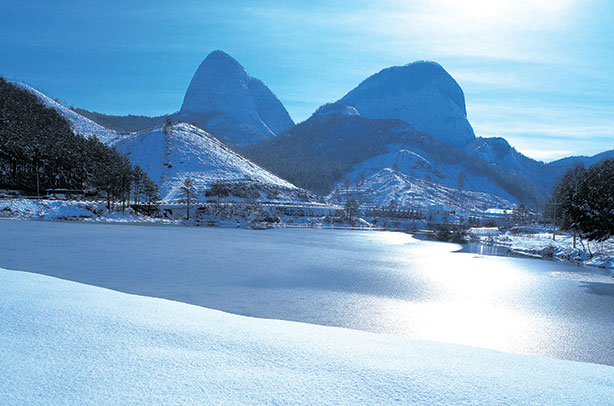



Stretching along the curvy side of the mountain, this 64.4km-long road combines with National Roads No. 30 and No. 13, and Local Road No. 795, as it surrounds the blue Yongdamho Lake. Sometimes it is humpy along the cogwheel-like lakeside, and sometimes it is smooth along its fluent curve. Because of these unique characteristics of Yongdamho Lake, its lakeside road has been a popular drive course.
In general, visitors drive their car to enjoy traveling along the curvy path and make stops to appreciate the beautiful scenery. As Yongdamho Lake offers many spectacular views, there are many stopping points. The ideal spot to enjoy the lake scenery is National Mang-Hyang Cemetery, which was built to comfort the longing of displaced people for their hometown due to the construction of the dam. Four observatories(Yongdam, Sangjeon, Ancheon, and Jeongcheon) have been built, and among them, Sangjeon Observatory is considered the optimal spot for viewing a wet fog and Jeongcheon Observatory a beautiful spot for enjoying a spectacular view of Yongdamho Lake. Yongdam Observatory located at Taegojeong Hall is also an ideal spot for viewing Yongdam Dam’s water supply source. Furthermore, the top of the dam(Gongdogyo Bridge) is also known for providing a beautiful view of Yongdamho Lake.
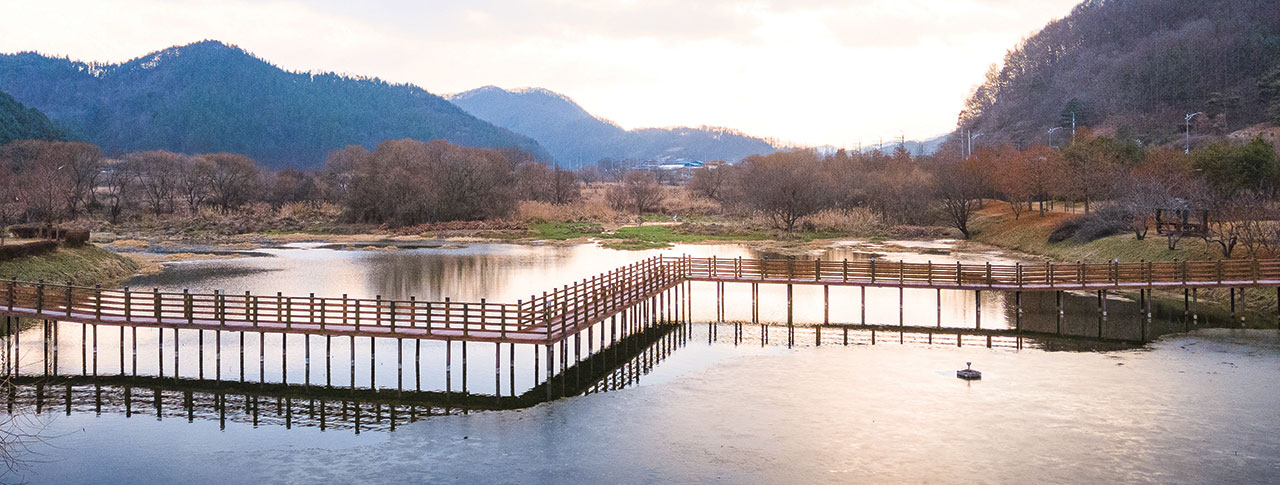
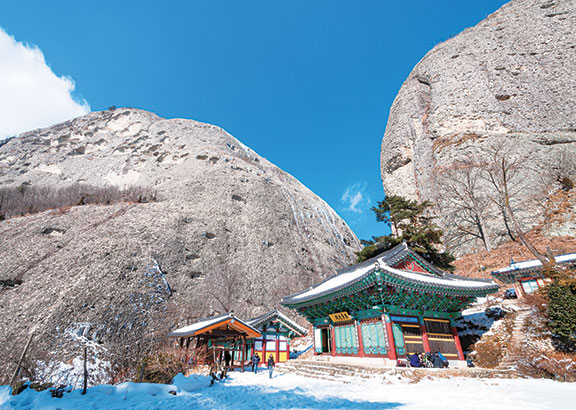
Maisan Mountain looks very mysterious with its two high, enchanted peaks, which resemble the ears of a horse. It is also known for its four signature wonders such as stone pagodas, reverse icicles, tafone, and watershed. The stone pagodas at Tapsa Temple have never been destroyed over some 100 years and icicles at Eunsusa Temple are found growing upward, which is a mystical phenomenon.
The recommended trekking route follows Nambu Parking Lot - Geumdangsa Temple - Tapsa Temple - Eunsusa Temple - Watershed - Bukbu Parking Lot. The duration is from 1 hr 20 min to 2 hr.
![]() Address. 130 Maisan-ro Jinan-eup, Jinan-gun, Jeollabuk-do
Address. 130 Maisan-ro Jinan-eup, Jinan-gun, Jeollabuk-do
![]() Tel. 063-430-8753
Tel. 063-430-8753
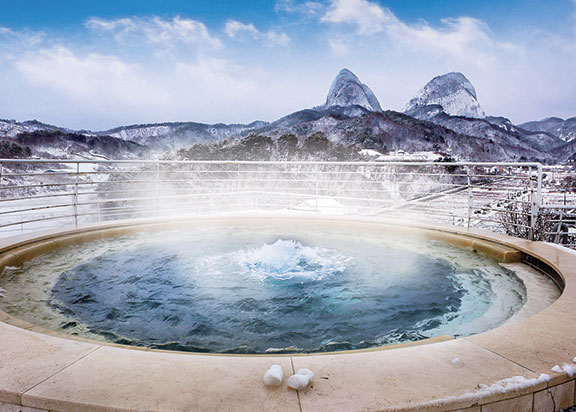
Jinan is the home of red ginseng. The Jinan Red Ginseng Spa is a multi-therapy zone that offers various red ginseng programs based on the principals of yin-and-yang and five elements of the universe. Located right in front of Maisan Mountain, the spa consists of a hotel, spa facilities, and a restaurant. Its famous spa provides different therapy programs: Bubble sense therapy with red ginseng bubbles, stone therapy with a hot gravel bed, sound floating with which customers float weightlessly and freely on the water, and so on. Customers can also enjoy an open-air bath at Sky Garden, with the beautiful landscape of Maisan Mountain in the background.
![]() Address. 16-10 Oesayang-gil Jinan-eup, Jinan-gun, Jeollabuk-do
Address. 16-10 Oesayang-gil Jinan-eup, Jinan-gun, Jeollabuk-do
![]() Tel. 1588-7597
Tel. 1588-7597
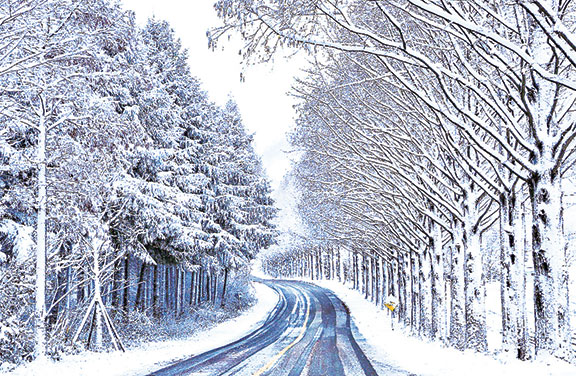
Known as the most beautiful road in Jinan, the Metasequoia Tree Trail in Bugwi was built at Moraejae Pass connecting Soyang-myeon in Wanju-gun with Bugwi-myeon in Jinan-gun. This 1.6 km-long road is lined with Metasequoia trees extending from Kenteogol Village to Wonsedong Village in Sedong-ri, Bugwi-myeon. Unlike the features of Damyang, Bugwi’s Metasequoia Tree Trail features the combination of curvy-straight and slanting-hollow paths. Therefore, cars in a hollow section are not shown on the road and appear again on a straight or slanting section. Trees with bare branches can be impressive, but snowy tree branches create an elegant atmosphere for the road scenery, evoking the wintery forest landscape of Northern Europe.
![]() Address. 69-3 Sedong-ri, Bugwi-myeon, Jinan-gun, Jeollabuk-do
Address. 69-3 Sedong-ri, Bugwi-myeon, Jinan-gun, Jeollabuk-do
